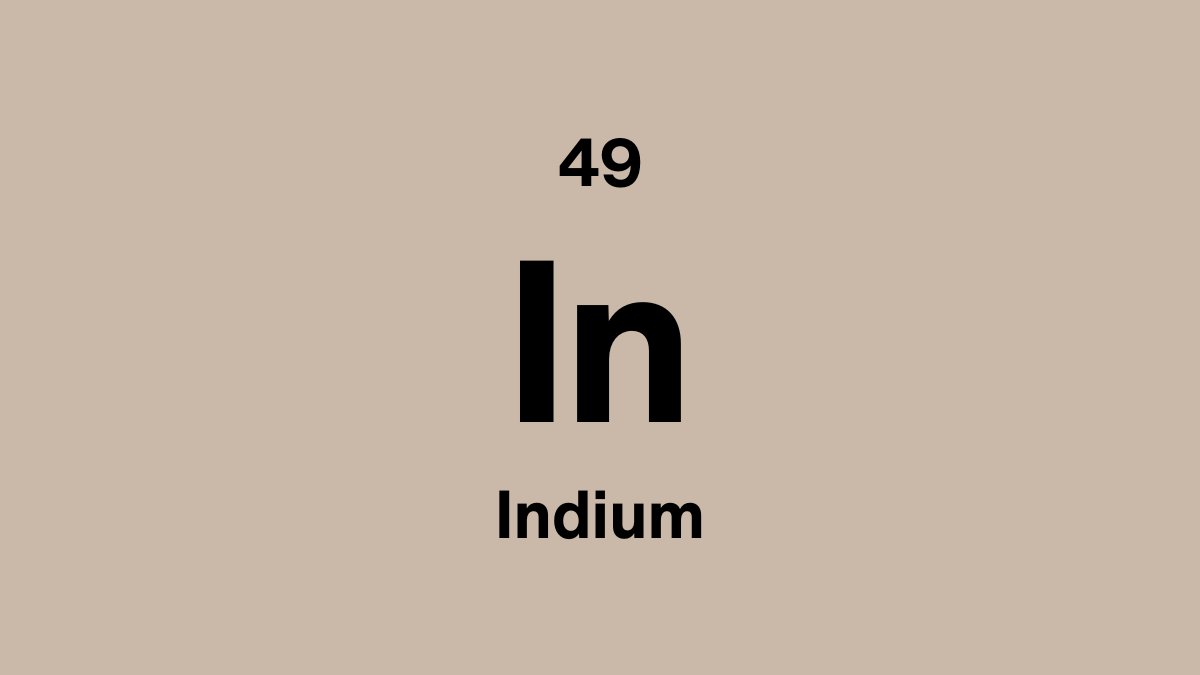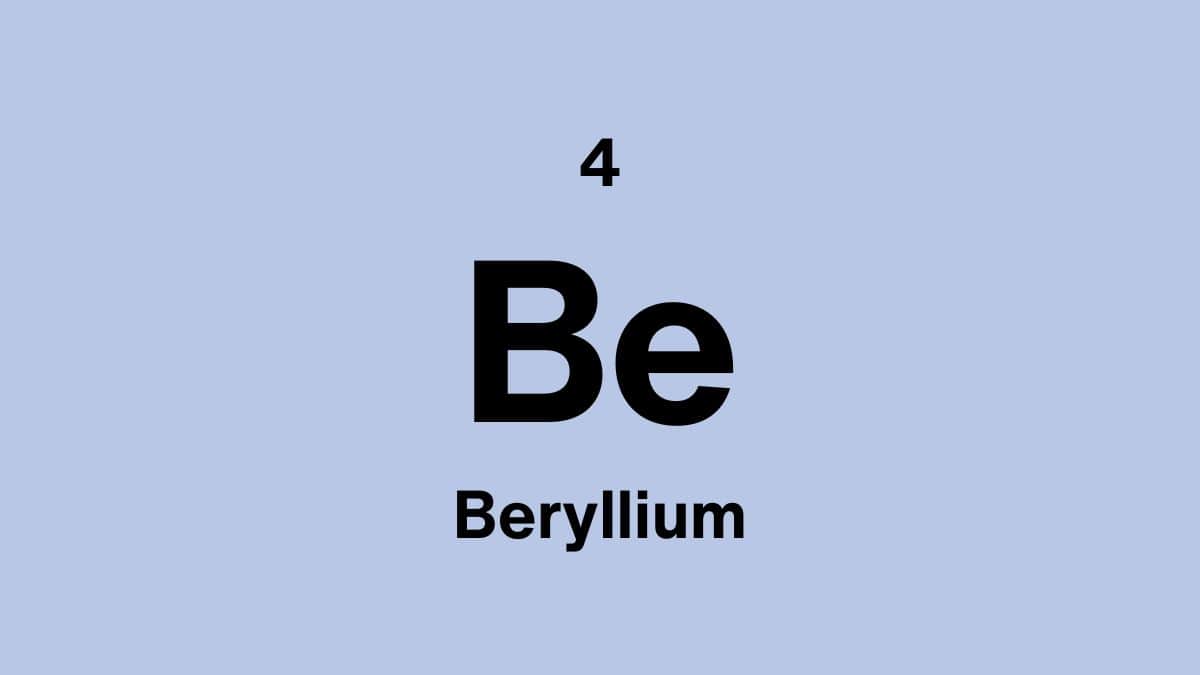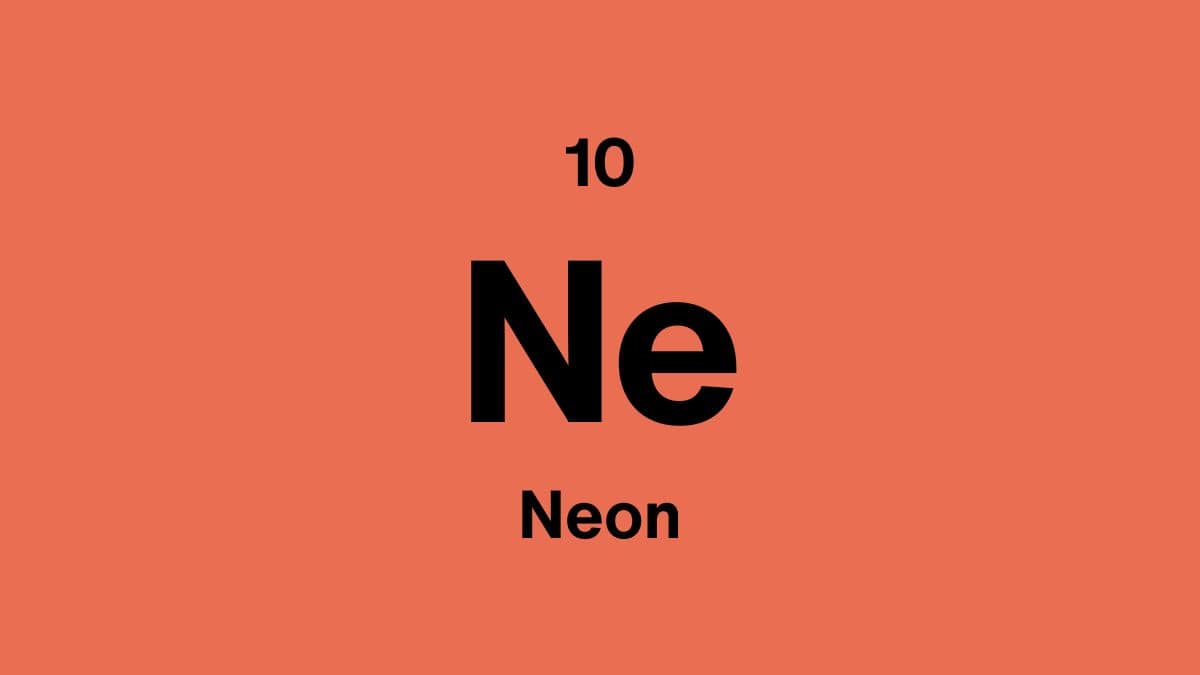Indium Revealed: The Soft Metal Behind Electronics and Coatings
Indium is a soft, silvery post-transition metal with low melting point and high malleability. Its unique electrical and optical properties make it valuable in electronics, coatings, and semiconductor technologies. Indium compounds are widely used for transparent conductive layers, solders, and semiconductors.
In this article, we explore indium's properties, natural occurrence, industrial applications, and key compounds.
Properties of indium
| Atomic Number: | 49 |
| Atomic Symbol: | In |
| Atomic Weight (amu): | 114.818 |
| Electronegativity: | 1.78 |
| Melting point: | 156.60°C | 313.88°F | 429.75K |
| Boiling point: | 2072°C | 3762°F | 2345K |
What does indium look like?
Indium has a silvery-white metallic appearance, is soft, and can be easily cut with a knife. It often forms shiny surfaces and is highly malleable.
Will we ever run out of indium?
Indium is relatively rare and usually obtained as a byproduct of zinc mining. Sustainable supply depends on mining, recycling, and recovery from industrial waste.
Can indium be recycled
Yes, indium is commonly recycled from LCD screens, solders, and semiconductor manufacturing residues to conserve resources and reduce environmental impact.
Where can indium be found?
Indium occurs in trace amounts in zinc ores, particularly sphalerite. Major producers include China, Canada, South Korea, Japan, and Belgium.
Is indium expensive?
Indium is moderately expensive due to its limited supply, increasing demand in electronics, and reliance on zinc byproduct mining.
Does indium have a biological role?
Indium has no known biological role. It is not considered essential and is mainly of industrial and technological interest.
What is pure indium used for?
- Electronics: Indium tin oxide (ITO) is used in touchscreens, LCDs, and solar panels.
- Solders and Alloys: Low-melting solders containing indium are used in specialized electronic connections.
- Coatings: Indium is used in corrosion-resistant coatings for metals.
- Semiconductors: Indium compounds like indium phosphide are used in high-speed and optoelectronic devices.
What are the main compounds with indium?
- Indium Tin Oxide (ITO) : Transparent conductive layer used in electronics.
- Indium Chloride (InCl3) : Used in chemical synthesis and research.
- Indium Phosphide (InP) : Semiconductor used in high-speed and optoelectronic devices.
Who discovered indium?
Indium was discovered in 1863 by German chemists Ferdinand Reich and Hieronymous Theodor Richter while examining zinc ores. Its name comes from the indigo-blue spectral line observed during its identification.
Is indium dangerous?
Indium is generally low in toxicity, but some compounds should be handled with care. Industrial safety precautions are recommended when working with indium and its compounds.
Fun facts about indium
- Indium is soft enough to be cut with a knife and leaves a visible streak.
- Its electrical and optical properties make it vital for touchscreens, LCDs, and solar panels.
- Indium tin oxide coatings allow displays to be both transparent and conductive.
Scientific data verified from RSC, Britannica, and the Minerals Education Coalition.



